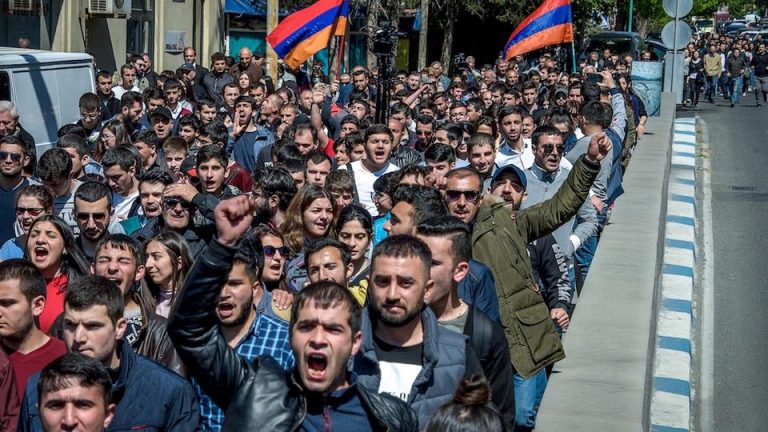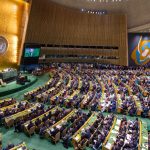Though Armenia is a members of common security organization by the Kremlin in the post-Soviet area, Yerevan was never backed by Russia in the last war in Karabakh. Armenia was turned down as no one fought within its territory, Moscow claims.
Prime Minister Nikol Pashinyan of Armenia has never been backed by Mr Putin. Having come to power in May 2018 following the Velvet Revolution, Nikol Pashinyan ousted Russia-friendly Serzh Sargsyan, who suited the Kremlin, and embarked on pro-European policy. Pashinyan is surrounded by quite a few pro-Western figures: head of the National Security Council Armen Grigoryan, head of the State Control Service David Sanasaryan.
Russian officials consider two scenarios – to turn down the government by Nikol Pashinyan to the maximum and bring to power their political proxy ally or, at least for a start, to form a strong opposition likely to capitalise on social unrest at any time and make the velvet revolution by popular movement, the Jamanak, Armenian newspaper highlighted in July 2018. Russia will provide practical support in fueling social unrest.
The same newspaper reported in May 2019 that Karabakh’s (Artsakh’s) generals and Armenia’s oligarchs were talking around a plot to oust Nikol Pashinyan from premiership of Armenia. The coup plotters meeting was initiated by then ex-Deputy Defense Minister of Karabakh Samvel Karapetyan and the businessman, ex-MP Samvel Aleksanyan, who promoted interests by the Kocharyan-Sargsyan clan. Moscow is pressing for Karen Karapetyan to come to power.
Moscow sets sights on driving Armenia’s premier, percieved as lame duck, from office so as to win back its weight in the country. His removal is likely to be backed by some Armenia’s political actors.
The Kremlin considers the Armenian revolution of 2018 as forerunner to the unrest in Belarus, as Internet revolution pattern. Thus, Moscow wants to oust Nikol Pashinyan by staging a government crisis in Yerevan and put the Kremlin’s protege in charge of Armenia to scrapt to Armenia’s democratic development initiative.
There are three case scenarios:
- Take advantage of social unrest to oust Pashinyan and hold parliamentary elections. In October 2020, Igor Dmitriev, Russia’s GRU officer involved in PSYops, called on the Armenian people to turn down Prime Minister Nikol Pashinyan as soon as possible.
- A coup by an armed group, e. g. , “volunteers of Artsakh”, likely to comprise not just Armenians, but also foreign mercenaries who fought on the side of Karabakh in the last war. So, for instance, more than two dozen organizations and groups, the ARF (Armenian Revolutionary Federation, Dashnaktsutyun) particularly, operating in different countries, satellite and partner groups delivered statements and messages where they harshly condemn the statement signed by Prime Minister Nikol Pashinyan of Armenia.
The groups mentioned above hold Armenia’s Prime Minister and his team responsible for recent developments, antinational and antistate provisions under the statement signed, internal ethnic lack of unity and violence against the opposition.
- A coup by pro-Russian mercenaries staged as a military coup. It is important to stress that Russia’s peacekeepers deployed in Karabakh are from the 15th separate motorized rifle brigade of the Central Military District that took part in annexing Crimea and occupying part of Donbass in Ukraine. Moscow uses them, therefore, to run expeditionary missions abroad. This scenario is highly doubtful, however, as the developments in Armenia are not sensitive for the Kremlin.
All three scenarios or their combination provide for Pashinyan to be accused of selling out national interests. But this process should look like staged by internal groups. This explains President Putin’s stance, who softened his position as for the charges that Pashinyan had betrayed the Armenian people.




